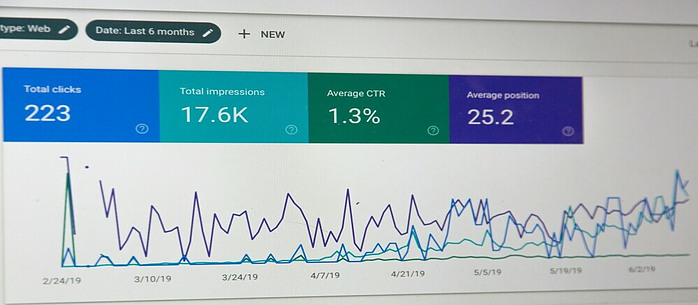Let’s explore how to avoid affiliate marketing pitfalls because jumping into affiliate marketing can seem like you’re entering a labyrinth of advice and strategies.
I’m going to break down the key components of affiliate marketing and how to build them into your business’s infrastructure.

First of all, it’s crucial to grasp the concept of affiliate marketing before you start picking products to promote.
Simply put, affiliate marketing involves promoting someone else’s products and earning a commission for sales or leads. But that’s going to include understanding your audience and what they’re interested in. Choose something that resonates with you and your audience.
You’re going to find out about the importance of choosing the right niche and products.
This isn’t just an arbitrary choice; it’s the cornerstone of your marketing efforts. If you’re passionate and knowledgeable about a subject, your audience will take notice and more readily trust your recommendations.
Building a solid foundation is about more than just signing up for affiliate programs. It means creating educational, entertaining, and engaging content that adds value to your audience’s life. The goal is to be seen as a reliable resource, not just another marketer trying to make a quick buck.
Maintaining authenticity and trust with your audience is paramount. Trust is the bedrock of any successful relationship, and it’s no different in affiliate marketing.
If you want to build a business with longevity, honesty, and transparency need to be at the forefront.
With these fundamentals in place, you’re better equipped to steer clear of the many mistakes and pitfalls that can hold back your affiliate marketing business.
Don’t worry too much about perfection; just focus on these essentials and adjust your approach as you go. It’s all about learning, growing, and forging ahead.
How To Avoid Affiliate Marketing Pitfalls

I’m going to walk you through some traps that catch many newcomers to affiliate marketing. Remember, how to avoid affiliate marketing pitfalls isn’t just important, it’s essential for gaining faster traction when building your online business.
First thing you need to know – don’t expect immediate results.
Successful affiliate marketing is a marathon, not a sprint. Set achievable goals and celebrate incremental progress. It may take time to see the fruits of your labor, but patience combined with persistence is key.
Balance is crucial. Promoting products is important, but if you don’t offer value beyond your affiliate links, your audience will tune out. Aim to solve problems and address your readers’ needs with informative content that stands out.
Putting all your eggs in one basket is risky. If you rely solely on one product or platform, policy changes or market shifts can seriously impact your income. Diversify to protect your business.
Tracking and analyzing your affiliate performance is non-negotiable. Without it, you won’t know which strategies are working or where you could improve. Use data to inform your decisions and refine your approach.
You can always adjust your approach down the road, but having a strong start by avoiding common pitfalls will set you up for success. This isn’t just about playing it safe; it’s about building a resilient, flexible business that can withstand the ups and downs of the affiliate world.
Solidifying Your Online Presence for Long-Term Growth
I’m going to get straight to the point: having a stable, professional online presence is key to the long-term growth of your affiliate marketing business. Don’t worry too much about being perfect from the get-go, but do focus on gradually building a platform that reflects your commitment and expertise.

A top-performing website isn’t just about slick design; it’s also about substance. The content you publish should serve your audience’s needs, helping them make informed decisions. Choose something that resonates with you and your potential customers, and you’re more on the path to success.
Diversifying your traffic sources is like not putting all your eggs in one basket. Consider exploring different marketing channels – from SEO to email marketing, and even podcasts or webinars. Each channel can help you reach new audiences and reduce the risk if one platform changes its algorithm or policies.
Now, let’s talk about social media. It’s a lot of opportunity but use it wisely. You want to connect with your audience without becoming that friend who only talks about themselves. Share valuable content, engage genuinely, and be mindful not to cross the line into spammy territory.
Cultivating a community is another robust strategy. When people talk about your content, share their experiences, and recommend your affiliate products, that’s powerful. Encourage this engagement by responding to comments, creating group discussions, and being actively involved.
Scaling Your Affiliate Business: Advanced Tactics
Now, you’ve sidestepped the initial pitfalls and built a solid foundation for your affiliate marketing adventure. But what’s next? That’s where scaling comes into play. And don’t worry too much about getting it perfect from the get-go – you can always adjust your approach down the road.
Continual learning is the bedrock of any progressive business strategy.
In my opinion, the affiliate marketing landscape changes so swiftly that it’s crucial to stay updated on the latest trends and techniques. Join forums, attend webinars, and read influential marketing blogs to refine your tactics continually.
SEO isn’t just a buzzword; it’s your ticket to long-term, sustainable traffic. Dive deep into keyword research and learn to craft content that not only resonates with your audience but also pleases search engines. Don’t just settle for any keywords; choose ones that are relevant to your niche and have a reasonable search volume. This will help you appear in search results, connecting you with people actively seeking the products you’re promoting.
On the networking front, choose something that resonates with you. There’s a lot of opportunity to connect with fellow marketers, and that’s the strategy I like to leverage. Whether it’s through social media groups, affiliate forums, or industry conferences, building relationships can lead to valuable partnerships and insightful exchanges.
Lastly, when you start seeing a return on your investments, reinvesting a portion of the profits can set the stage for accelerated growth. Whether it’s updating your website, investing in better tools, or exploring paid traffic options, these steps can help you expand your reach and improve your bottom line.
After reflecting on these points, my question to you today is, how are you planning to scale your affiliate marketing efforts? Remember, your first attempt doesn’t need to be your last – there’s always room to iterate and improve.
I hope that you’re as excited about your affiliate marketing journey as I am. Thanks for reading, and I’d love to hear your feedback on how to avoid Affiliate Marketing pitfalls so share your scaling strategies or questions below.
![]()

Hi
This is brilliant, comprehensive, and helpful content. Your post gives us the cornerstone of affiliate marketing being, choosing the right niche and products. This is so important because sometimes you can choose a product only to find that the supplier or merchant is unreliable, which will affect your business negatively. Hence is very critical to research the product and supplier.
It is also true that if you are passionate and knowledgeable about the subject, the audience will notice, and will keep trusting you more and more. You have crowned it all talking about building a solid foundation which takes time. But once it is there everything falls into place.
Thank for sharing
Richard